In retail, pricing has evolved from a periodic exercise to a real-time strategic imperative. Macroeconomic issues like inflation and trade disputes, such as tariffs imposing additional cost pressures, are driving consumer price-sensitivity and sentiment to concerning levels. Retailers face an unprecedented challenge: how to maintain competitive pricing while protecting already thin margins.
The traditional approach of static pricing rules and manual spreadsheet management is no longer sufficient. Modern businesses need intelligent, automated retail price optimization strategies that can adapt to market dynamics in real-time while balancing the complex trade-offs between competitiveness and profitability.
Key takeaways
- Price optimization uses AI and automation to set optimal prices across products, channels, and locations.
- Economic shifts and consumer pressure make strategic pricing critical to maintaining margins while staying competitive.
- Retailers identify manual processes, poor demand visibility, and siloed systems as primary pricing challenges.
- AI-driven pricing optimization can deliver 1-2% sales increases and 1-2% margin improvements through better price positioning and elasticity understanding.
What is retail price optimization?
Retail price optimization refers to using AI-powered technology to automatically determine and adjust optimal prices across products, channels, and locations to maximize revenue, margin, and competitive positioning.
Unlike traditional pricing approaches that rely on static rules or periodic manual updates, price optimization leverages machine learning algorithms, predictive analytics, and real-time data to make intelligent pricing decisions at scale. This technology-driven approach enables retailers to:
- Maximize profitability by understanding price elasticity and demand patterns for every product.
- Stay competitive through automated competitor monitoring and proactive price positioning.
- Improve customer satisfaction by offering optimized value perception across their shopping missions.
- Reduce operational overhead by automating routine pricing tasks and exception management.
The core value of pricing optimization lies in its ability to process vast amounts of data, from historical sales patterns and competitive intelligence to supply chain constraints and promotional calendars, and translate that information into actionable pricing strategies that human planners could never manage manually.
At its core, pricing optimization recognizes that retail is fundamentally a demand-driven business. By using advanced analytics to understand how customers respond to price changes across different products, channels, and locations, retailers can make data-driven decisions that balance multiple objectives simultaneously: growing sales volume, protecting margins, and maintaining competitive positioning.
Why retailers need price optimization
A recent report from Retail Systems Research, Profit Optimization in the Age of Hyper Price Sensitivity, reveals a significant gap between retailers’ recognition of pricing’s importance and their ability to execute effective pricing strategies. This disconnect creates both immediate operational challenges and long-term competitive vulnerabilities.
Price sensitivity has reached critical levels among consumers. Research shows that 62% of shoppers say price means more to them now than ever, and they’re willing to switch stores for better deals. With easy access to price comparisons online, customers can quickly identify retailers offering the best value and adjust their shopping behavior accordingly. This heightened price consciousness means customer loyalty can no longer be taken for granted, and pricing missteps immediately affect market share and profitability.
Operational challenges further compound retailers’ challenges. Among the top challenges retailers reported are determining optimal price adjustments (42%) and accurately predicting the outcomes of pricing decisions (33%). These operational pain points reflect deeper systemic issues with manual processes, inadequate data analytics, and disconnected price planning systems.
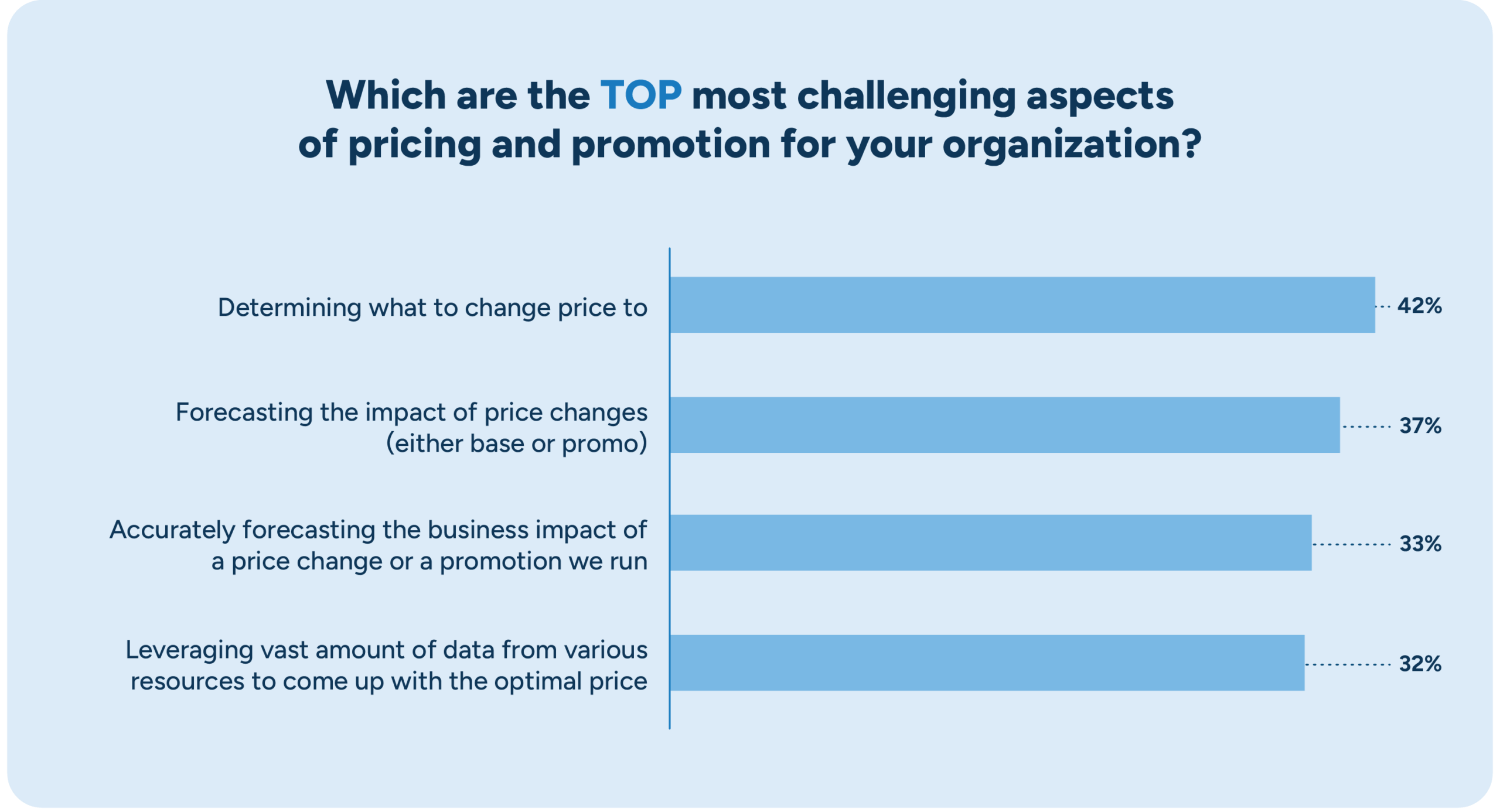
Legacy processes create decision-making bottlenecks. Many retailers continue to rely on spreadsheet-based approaches that can’t scale to handle tens of thousands of SKUs across multiple channels and locations. The manual nature of these processes also introduces human error and makes consistent strategy execution impossible.
Siloed systems cause disconnected pricing strategies across channels and functions. When base pricing, promotional planning, inventory management, and supply chain teams operate in isolation, the result is often conflicting objectives and suboptimal outcomes.
Another critical weakness is reactive pricing decisions driven by competitor monitoring rather than demand data. While competitive intelligence is important, pricing strategies based solely on matching competitors miss opportunities to optimize based on actual customer behavior and demand patterns.
Further, scenario testing capabilities are necessary to measure the potential impacts of pricing changes proactively to mitigate any mistakes that could cost the retailer lost sales or, worse, lost customers.
Retailers widely acknowledge that technology plays a crucial role when considering how to provide more value to their customers and build lasting loyalty. More than 60% of retailers surveyed in the report identify price optimization as critical to their business’s success. However, few have yet to invest in this valuable area.
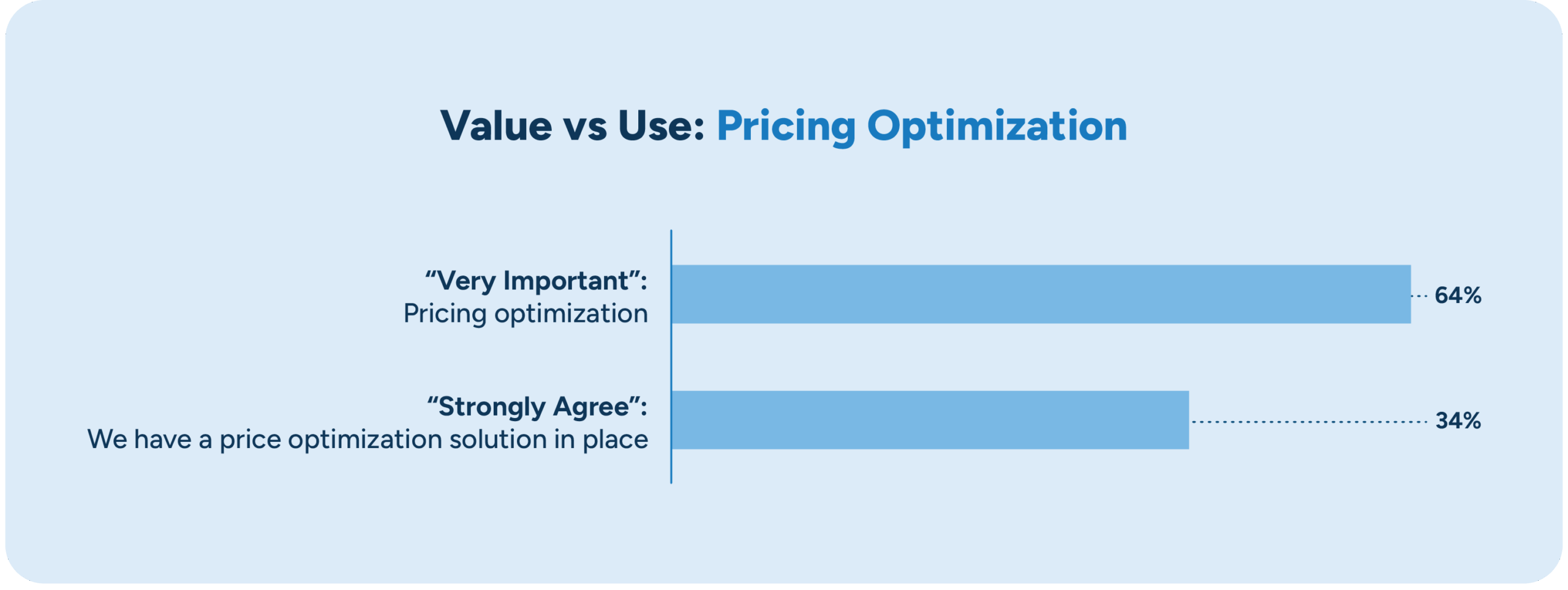
Retailers who continue with inadequate pricing approaches will be at a decisive disadvantage against those who leverage modern optimization technology to deliver genuine customer value while protecting profits.
The critical challenges of retail pricing optimization
Understanding consumer-centric pricing
One of the most significant challenges retailers face is correctly identifying which products truly drive store choice and price perception. This misalignment creates substantial waste.
Consider a European grocery retailer that classified 28% of their assortment as core products requiring competitive pricing. When analyzed using AI-driven customer mission models, only 6% of products truly mattered for price perception. More troubling, those critical 6% were actually priced above competition, while 30% of non-critical items were priced below competitors—essentially giving away margin where it didn’t matter.
The root cause of this problem lies in outdated approaches to product classification. Traditional methods rely on category-based assumptions or supplier recommendations rather than consumer behavior data. Without understanding shopping missions—the underlying reasons customers visit stores—retailers can’t identify which products are truly critical to customer decision-making.
Store localization and price zoning
While operationally simple, national pricing strategies miss critical local market dynamics that can significantly impact performance. The assumption that all stores within a format or geographic region face similar competitive pressures and customer demographics is increasingly false.
Local competitive landscapes vary dramatically, even within the same metropolitan area. A store near a discount retailer may see customers using it for basic staples while shopping elsewhere for premium items, fundamentally changing the role of different product categories. Similarly, demographic variations mean that price sensitivity for premium products like specialty cheeses may differ completely in affluent versus working-class neighborhoods.
The challenge for retailers is that manual store clustering approaches based on simple geographic or format criteria fail to capture these nuances. Traditional clustering might group stores by size or general location, but misses the specific competitive dynamics and customer missions that drive local demand patterns.
Price optimization and elasticity management
Perhaps the most complex challenge facing pricing teams is balancing multiple, often conflicting objectives when setting prices. A typical pricing decision must consider:
- Competitive positioning requirements: “Be within 5% of a key competitor.”
- Margin targets: “Maintain a minimum 15% gross margin.”
- Volume constraints: “Reduce sales by no more than 10%.”
- Regulatory requirements: “Adhere to HFSS regulations and local pricing laws.”
- Supply chain realities: “Consider inventory levels and lead time constraints.”
Manual resolution becomes impossible at scale when these factors conflict, which they frequently do. Consider a simple example where competitive matching requires a price of $5.58, but margin requirements demand $7.00. Traditional approaches either apply rigid hierarchies (always prioritize margin over competition) or leave such conflicts for manual review, creating bottlenecks and inconsistent decision-making.
The situation becomes even more complex when factoring in promotional strategies. Many retailers manage base pricing and promotional pricing as separate functions, missing opportunities to optimize the combined impact on customer perception and profits. Without integrated planning, promotional discounts may undermine carefully constructed base pricing strategies, or base prices may be set without considering upcoming promotional activities.
3 tips for achieving retail price optimization
Retailers who continue with manual, siloed pricing approaches will find themselves at an increasing disadvantage against competitors leveraging modern pricing technology. The urgency for strategic price optimization is clear.
Pricing mistakes have immediate and visible consequences in an environment where consumer price sensitivity and competitive pressures continue to intensify. Retailers who wait for economic conditions to stabilize before investing in price optimization may find they’ve missed the window when such investments could have the most significant impact.
Here are three tips for retailers looking to begin their price optimization journey:
1. Automate price optimization with AI
The complexity of modern pricing decisions — balancing elasticity, competitive positioning, margin targets, regulatory requirements, and operational constraints—exceeds human capacity to manage manually at scale. Constraint-based optimization systems can process these multiple objectives simultaneously and resolve conflicts according to predefined business priorities.
AI-enabled price optimization from RELEX uses machine learning to understand price elasticity for every product, then applies constraint optimization to find the best balance among competing objectives. When rules conflict, as they frequently do, the system can make intelligent trade-offs based on business priorities rather than leaving decisions to manual review.
The key to success is maintaining human oversight while automating routine decisions. Exception-based workflows ensure that significant price changes or unusual situations receive human review, while the vast majority of pricing decisions happen automatically according to defined business rules.
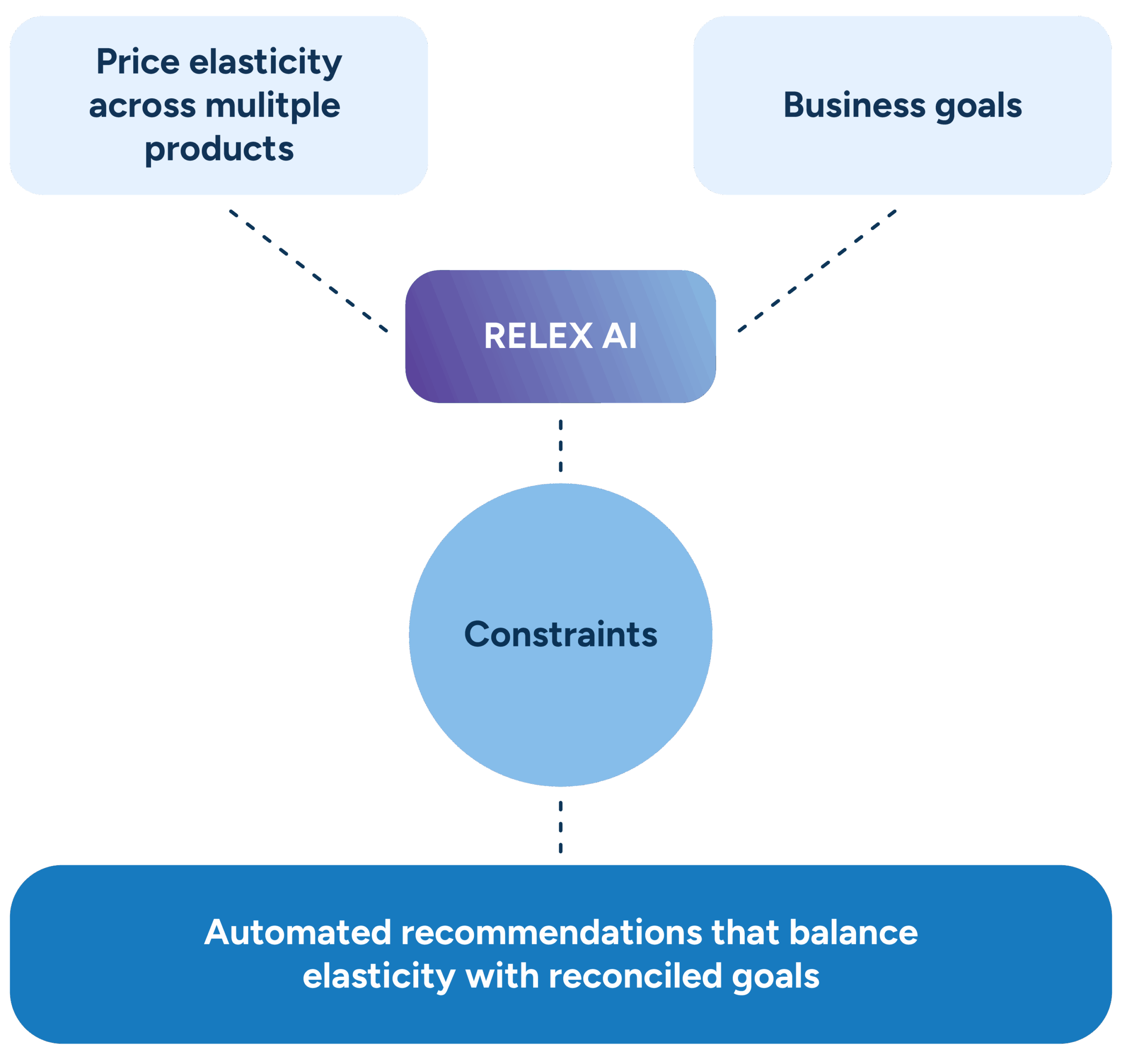
Further, the solution integrates with the rest of the RELEX platform, connecting data and plans across functions, mitigating the costly and inefficient ripple effects of siloed decisions. With a unified platform, teams can plan efficiently and collaboratively.
Recommendations:
- Deploy machine learning models to understand price elasticity across all products.
- Implement constraint optimization engines that balance multiple business objectives.
- Create exception workflows for unusual situations requiring human review.
- Maintain transparent decision logic so pricing teams understand and trust the solution’s pricing recommendations.
Achievable benefits:
- 20-25% reduction in manual pricing work.
- Consistent application of pricing strategy across all products.
- Real-time conflict resolution between competing business objectives.
- Faster response to market changes and competitive moves.
2. Implement consumer mission-based pricing
The foundation of effective pricing optimization lies in understanding why customers visit your stores and which products influence their choice of where to shop. Traditional approaches to identifying key value items (KVIs) often rely on category-based assumptions or historical precedent rather than actual customer behavior data.
RELEX price optimization software can analyze transaction data to identify natural product clusters and shopping patterns, revealing the missions that drive store visits. Whether it’s weekly grocery shopping, quick convenience purchases, or special occasion needs, each mission has its own set of price-sensitive products that influence store choice.
Data-driven insights on the impacts of price changes on multiple KVIs enable retailers to avoid unintended ripple effects across the business.
For example, analysis might reveal that coffee is a key driver for morning convenience missions. At the same time, vanilla extract, despite being in the same general “grocery” category, has virtually no impact on store choice. This insight allows retailers to invest in pricing competitiveness where it truly matters while recapturing margin on products that don’t influence customer decisions.
Beyond analysis, RELEX enables robust scenario testing capabilities to ensure strategic and informed pricing decisions. A digital twin, a replica of the physical supply chain, allows teams to test outcomes based on real-world data and simulate the potential impacts of different pricing strategies on sales, margins, and competitive positioning. The insights gained from these simulations will enable the team to forecast the effects of price adjustments, ensuring compliance with internal guidelines while making more confident, informed decisions.
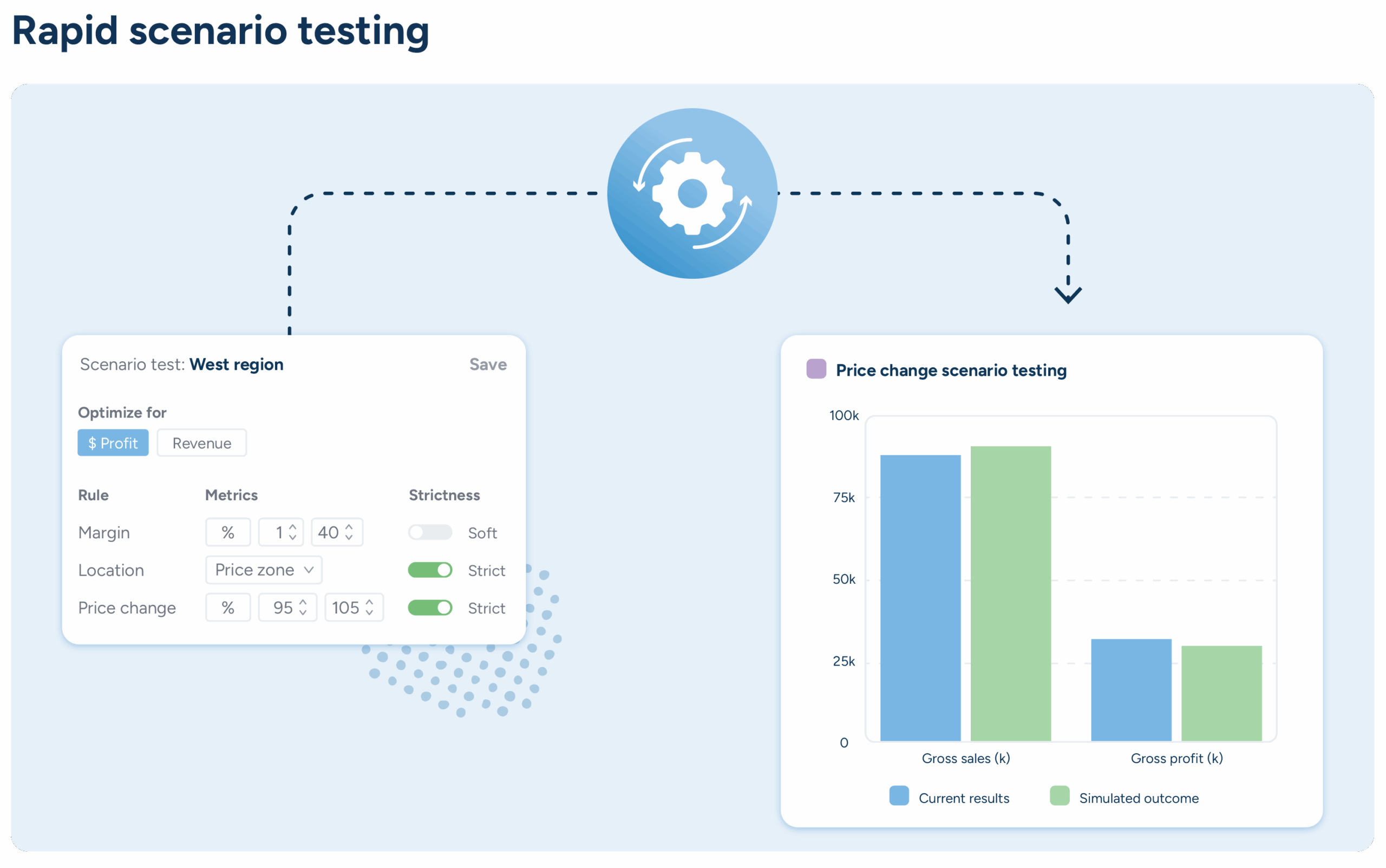
Recommendations:
- Deploy AI models trained on transaction data to identify shopping missions.
- Analyze product roles within each mission (traffic drivers vs. margin builders).
- Update KVI classifications regularly based on evolving customer behavior.
- Enable scenario testing with real-world data to measure the impacts of changes.
Achievable benefits:
- Pricing investments focused on products that actually drive store choice.
- Optimized margin recapture on non-critical items.
- Pricing strategies aligned with actual consumer behavior patterns.
- Improved price perception while protecting profitability.
3. Deploy intelligent price zones and localization
Moving beyond simple geographic clustering requires AI-driven store segmentation that considers the complex interplay of competitive dynamics, customer demographics, and local shopping patterns. Rather than assuming all stores within a format should have identical pricing, intelligent localization recognizes that even nearby locations may face fundamentally different market conditions.
RELEX provides an advanced machine learning model underpinned by deep neural networks to help retailers determine the optimal number of price zones. The model analyzes receipt data to extract price elasticity patterns, store attributes, competition, demographics, and purchasing behaviors to cluster stores into logical zones. It also accounts for regional cost structures and operational capacity.
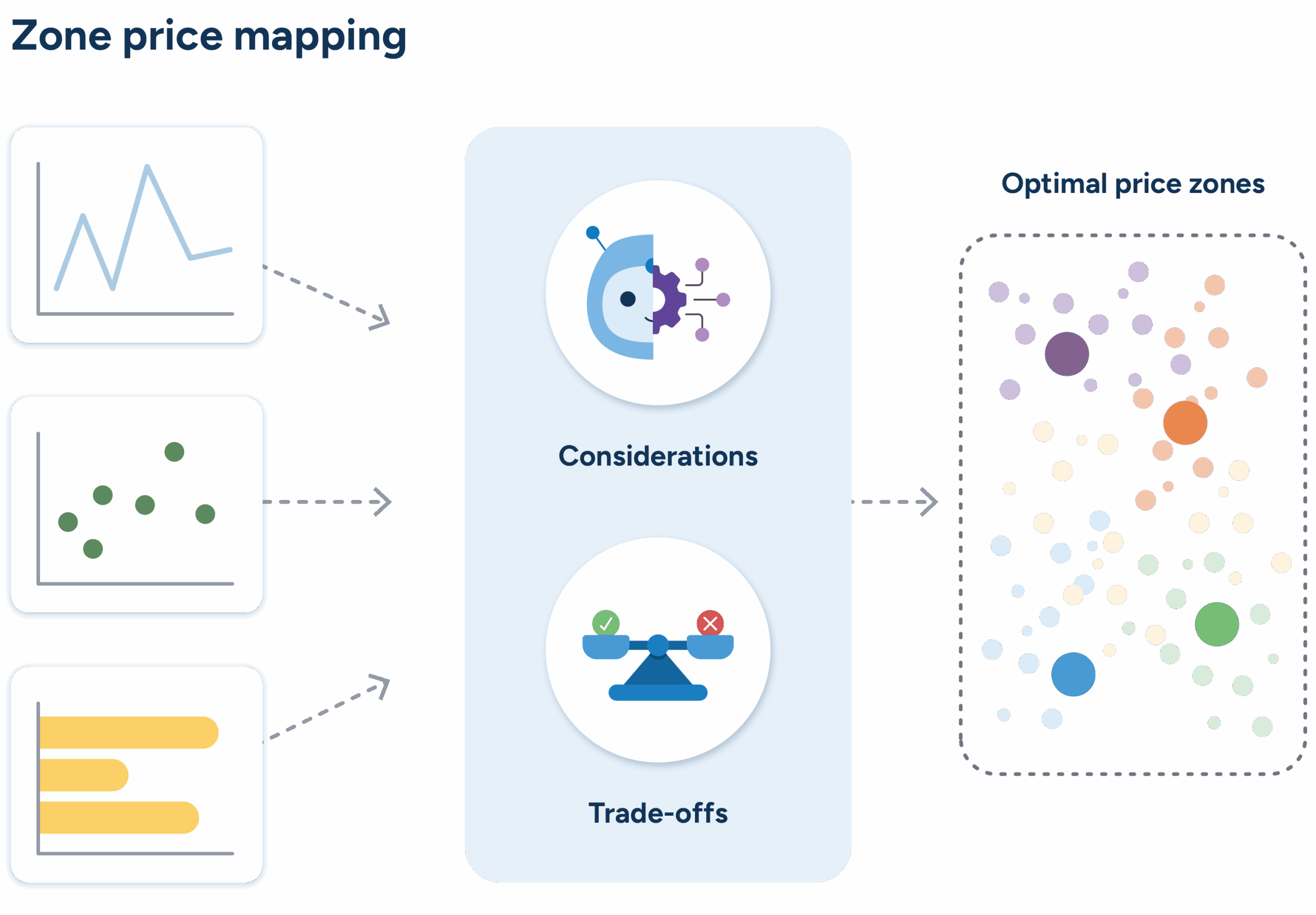
Further, RELEX provides an advanced business rules engine that can apply price changes across multiple products, categories, or stores from a single custom command. Retailers can create rules to calculate optimal prices for each zone, considering regional conditions and incorporating business objectives like competitive positioning and margin requirements.
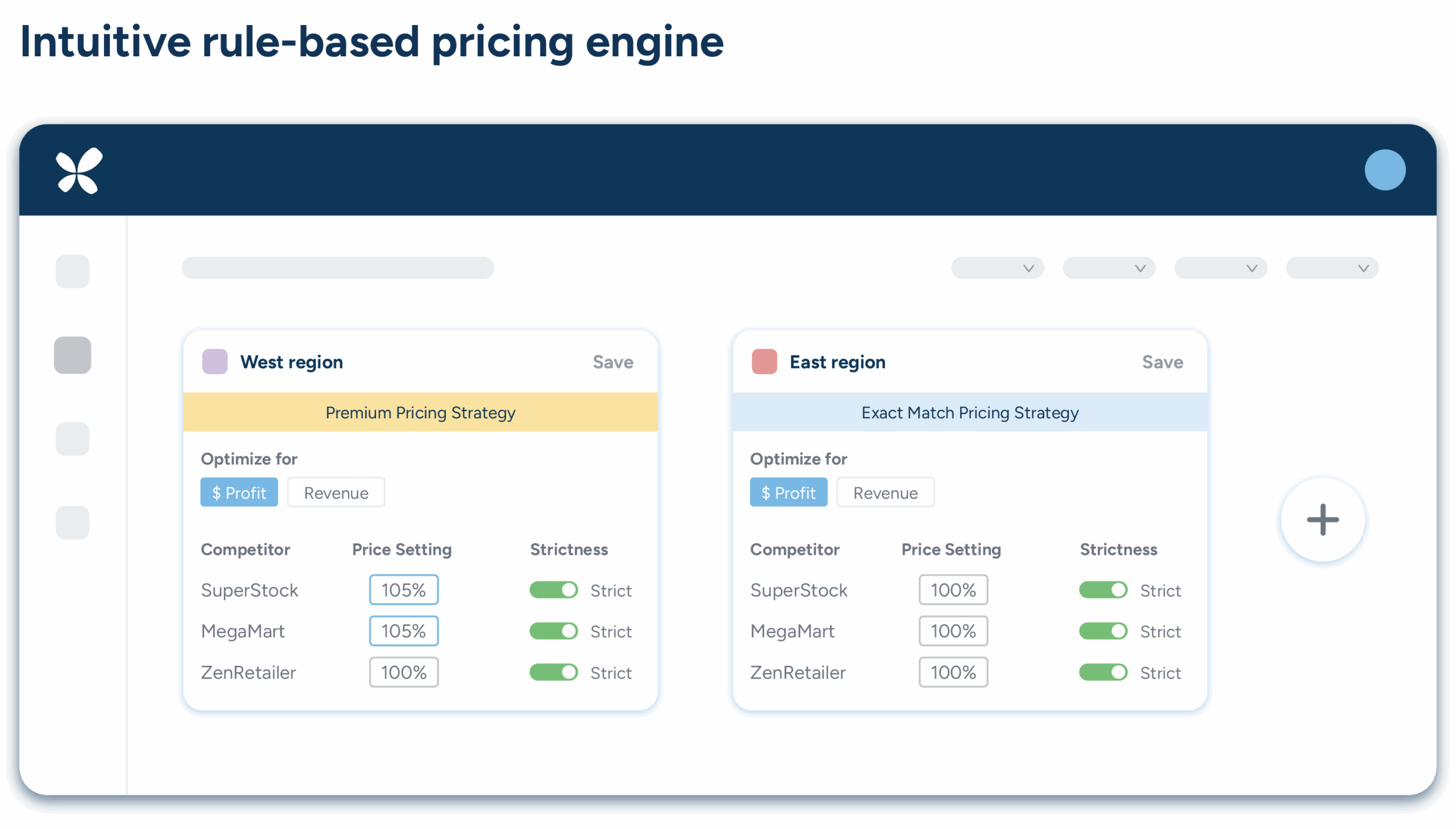
Conflicts can occur when there are numerous active rules within each zone. The RELEX business rules engine resolves conflicts by enabling users to prioritize rules based on their business objectives, reducing time-consuming interventions, which can be a blocker to using zone pricing at scale.
Recommendations:
- Segment stores with AI-driven clustering based on competitive dynamics and customer missions.
- Start with zone-level localization (3-5 zones) before considering store-level pricing.
- Focus localization on 10-15% of the assortment where local dynamics vary most significantly.
- Monitor cross-shopping patterns to avoid negative customer reactions.
Achievable benefits:
- 1-2% margin improvement through targeted localization of 15% of assortment.
- Improved competitive positioning in key local markets.
- Reduced pricing waste through demand-based optimization.
- Consistently maintained price image in stores where it matters most.
4. Strengthen pricing strategy with predictive pricing
Predictive pricing provides visibility into both the direct and hidden ripple effects of price changes, showing how pricing decisions influence shopper behavior across products and time periods. Visible sales shifts capture only part of the story, so the broader impacts often come from indirect effects that traditional analysis methods miss. Predictive pricing uncovers purchasing patterns and product relationships from millions of transaction level records, and with far greater accuracy than manual or spreadsheet-based approaches.
Effective predictive pricing software combines short-term tactical insights with long-term strategic factors. Short-term models evaluate near-real-time signals, such as competitive moves, promotions, and store-level conditions, enabling rapid response. Long-term models incorporate seasonality, market trends, economic influences, and product lifecycle stages to understand how pricing strategies perform over extended periods. Together, these horizons inform more confident and consistent pricing decisions.
Recommendations:
- Use two or more years of transaction data to capture seasonality, promotional cycles, and customer behavior patterns.
- Incorporate both short-term signals (competitive changes, promotions, store conditions) and long-term factors (market trends, economic indicators, lifecycle stages) into predictive models.
- Use scenario simulation to test pricing strategies and compare projected outcomes before implementing price changes.
- Integrate predictive pricing into daily workflows rather than treating it as a separate, ad hoc analysis.
Achievable benefits:
- Faster response to market shifts through continual analysis and near-real-time alerts.
- Improved decision accuracy using behavioral forecasts that predict customer response.
- Enhanced visibility into cross-item relationships, switching effects, halo impacts, and basket dynamics.
- Greater operational efficiency as teams move away from manual, spreadsheet-driven processes.
- Better coordination and fewer execution errors through integrated, end-to-end pricing workflows.
Smarter pricing with retail price optimization technology
The technology landscape for pricing optimization has evolved significantly, but not all solutions are created equal. Retailers evaluating price optimization technology should understand the critical differences between purpose-built pricing optimization software and generic alternatives.
Purpose-built AI/ML pricing engines differ fundamentally from generic business intelligence (BI) tools in their ability to understand retail-specific concepts like price elasticity, promotional lift, and customer missions. While general analytics platforms can process pricing data, they lack the specialized algorithms to optimize prices effectively. Price optimization requires understanding complex retail dynamics like cannibalization effects, halo impacts, and pantry loading—concepts that generic tools simply aren’t designed to handle.
Integrated price and promotion planning platforms represent another critical capability. Traditional retail approaches frequently silo everyday pricing from promotional decisions, overlooking the value of integrated optimization. Integrated platforms ensure that promotional strategies complement base pricing rather than undermining carefully constructed price positioning.
Seamless supply chain integration enables inventory-aware pricing decisions. When pricing teams can see current stock levels, incoming shipments, and supply chain constraints, they can make smarter decisions about when to be aggressive on price and when to preserve margin. This integration also helps avoid the common problem where promotional pricing outstrips supply capacity.
Scalability for omnichannel retailers managing complex product catalogs across multiple formats and channels requires purpose-built architecture. Consumer goods retailers may manage 40,000+ SKUs across hundreds of locations with different competitive dynamics—a scale that generic tools struggle to handle effectively.
Transparency and explainability in AI decision-making are crucial for user adoption. Pricing professionals need to understand why the system recommends specific prices, not just what those prices should be. Black box systems that can’t explain their logic typically fail during implementation because users don’t trust recommendations they can’t understand.
Common alternatives and their limitations include:
- BI & analytics tools: Too broad in focus, lacking pricing-specific functionality and retail domain expertise
- Clearance optimization solutions: Reactive rather than proactive, focused on moving excess inventory rather than optimizing ongoing pricing strategy
- Spreadsheet-based approaches: Don’t scale beyond small assortments, are prone to errors, and can’t process the complex calculations required for modern pricing optimization
The most successful pricing optimization implementations combine best-in-class technology with strong organizational capabilities and a structured approach. Having high-quality data, skilled team members who can manage AI-driven tools, and clear processes for exception handling are just as important as the technology itself.
The future of retail pricing
The future belongs to retailers who can balance speed with intelligence — responding quickly to market changes while simultaneously making data-driven pricing decisions that optimize multiple objectives. AI-driven pricing optimization provides the foundation for this capability, but success requires commitment to technological advancement and organizational change.
For retailers ready to begin this journey, the path forward starts with an honest assessment of current pricing maturity and a clear identification of the most significant opportunities for improvement. Whether that’s a better understanding of customer missions, more intelligent price zoning, or automated price optimization, the key is starting with a focused plan to demonstrate value and build organizational confidence in AI-driven approaches.
Retailers who embrace this transformation will be better positioned to survive current economic challenges and thrive as market leaders in an increasingly complex and dynamic retail landscape.
Retail price optimization FAQ
What is retail price optimization?
Retail price optimization is the strategic process of determining the optimal price of a product to maximize sales, profitability, and customer satisfaction. This involves analyzing multiple factors including demand patterns, competitor pricing, customer willingness to pay, and even tariffs, typically using advanced tools and algorithms.
RELEX enhances traditional price optimization by integrating it with demand forecasting, promotions planning, and supply chain management for complete end-to-end alignment. Using real-time data and predictive analytics, RELEX helps retailers make informed pricing decisions that adapt dynamically to market conditions.
This unified approach ensures pricing strategies remain both competitive and sustainable, helping retailers balance profitability with customer trust while planning better, selling more, and wasting less.
Why is price optimization important in retail?
Price optimization is critical for retailers to maintain competitiveness while protecting profit margins in rapidly changing markets. With constant pressures from inflation, seasonal trends, and competitor actions, retailers must adapt quickly to survive.
RELEX price optimization software provides actionable insights and automates pricing decisions across all channels and regions to help retailers manage these complexities. Optimized pricing also enhances customer satisfaction through fair, consistent pricing that builds loyalty and strengthens brand reputation.
Integrating pricing with demand forecasting and promotions planning ensures pricing strategies align with broader business objectives, delivering measurable value and supporting long-term retail success.
What data is needed for effective price optimization?
Successful price optimization requires comprehensive data including:
- Historical sales data
- Competitor pricing information
- Customer demographics
- Product attributes
RELEX leverages granular, real-time data from across the entire business operation to expand on these basics. This data includes:
- Demand forecasts.
- Promotional performance metrics.
- Supply chain constraints.
This integration creates accurate, actionable pricing models informed by complete operational context.
RELEX Price Optimization combines internal and external data sources to help retailers understand price elasticity, market trends, and customer behavior at a granular level. This comprehensive approach produces precise, adaptable pricing strategies that effectively achieve business goals.
How does AI improve price optimization in retail?
Artificial intelligence (AI) analyzes massive datasets to identify patterns and insights beyond human capability and proves transformative in price optimization. RELEX specifically employs machine learning (ML) algorithms to forecast demand, calculate price elasticity, and recommend optimal price points for various market scenarios.
This approach enables retailers to make proactive, data-driven decisions that respond intelligently to market changes, providing retailers with real-time pricing adjustments that align with current conditions and business objectives.
The automation of complex analytical processes and delivery of actionable insights through RELEX’s AI-powered solutions drives measurable value, improves customer satisfaction, and supports sustainable long-term growth in retail operations.





